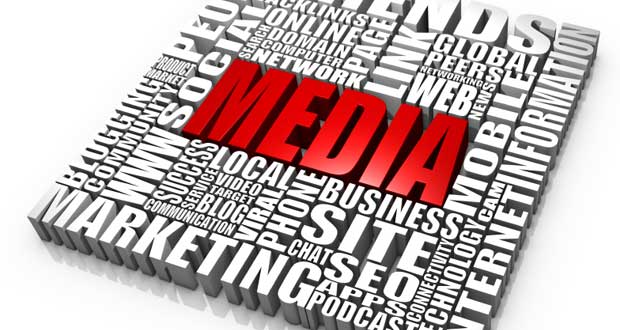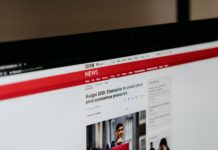Eye-Tracking and Survey-Based Study by Sharethrough and IPG Media Lab Delivers Insight into Native Advertising Consumer Perception and Behavior
SAN FRANCISCO, Calif. – Sharethrough, in conjunction with the IPG Media Lab, part of IPG Mediabrands, announced the results of the industry’s first native ad effectiveness study measuring visual attention and brand lift for native ads from top brands, including National Geographic, Southern Comfort and a premium travel brand. Findings show that consumers visually engage with native ads more frequently than traditional banner ads and in an equivalent way to editorial content. The study also found native ads drive superior brand lift over standard banner ads.
Native Ads Are More Visually Engaging than Banner Ads
The study, which surveyed 4,770 consumers and used latest eye-tracking technology to assess the attention of 200 consumers, showed that users’ visual attention clearly was superior for native ads than banner ads.
1. Frequency of Views – Consumers looked at native ads 53% more frequently than banner ads. Native ads were viewed 4.1 times on average per session versus banner ads, which were viewed 2.7 times on average per session.
2. Total viewership – 25% more consumers were measured to look at in-feed native ad placements (the most common editorial native ad format) than banner ad units.
Native Ads Drive Higher Brand Lift than Banner Ads
The study showed that native ads drove higher brand lift for all campaigns. Interestingly, the delta was even more pronounced for respondents who had previously bought a product from the advertiser.
1. Higher Average Brand Lift – Native ads registered an 18% higher lift for purchase intent and 9% higher lift for brand affinity responses than banner ads
2. More Likely to Be Shared – 32% of respondents said the native ad “is an ad I would share with a friend of family member” versus just 19% for banner ads.
3. More Personal – 71% of consumers that had previously bought a product from the advertiser said that the brand was one they “personally identify with” versus just 50% for banner ads.
Native Ads Are Consumed the Same Way People View Editorial Content
The study showed that users visual attention for native ads was nearly equivalent to the visual engagement of original editorial content. The behavior was measured by placing original content and native ads in the exact same placement on the webpage and measuring respective engagement.
1. Total Viewership – A slightly higher percentage of people looked at the native ads (26%) than original editorial content (24%)
2. Time Spent Viewing – Consumers looked at the original editorial content for an average of 1.2 seconds vs native ads where they viewed for an average of 1.0 seconds.
“At the IPG Media Lab, we know that marketers’ greatest loss in value is most often inattention to ads. Past research shows us that neither overly intrusive nor easily ignored ads are effective. But, this study validates that we are on the right path to finding that middle-ground, and that native advertising is a compelling way to navigate this middle ground,” said Kara Manatt, VP, Consumer Research Strategy, IPG Media Lab, who co-authored the report.
Clear Implications for Media Buyers and Planners
1. For campaigns that are focused on driving brand metrics such as brand affinity and purchase intent, native ads have shown a superior capacity to improve these metrics than banner ads.
2. Marketers that are actively creating original brand content should look to promote their content through native ads, as people view them similarly to editorial content
3. For campaigns that are targeting brand loyalists, native ads have shown a strong ability to help people identify more deeply with the brand.
Clear Implications for Publishers
1. Native ads have shown to be appreciated more than banner ads by consumers and thus offer an overall better user experience for a website
2. Native ads provide marketers with a new channel to connect with consumers that is a strong fit for a brand’s content marketing efforts
3. Native ads have shown a strong ability to drive higher brand affinity among brand loyalists, which strengthens the opportunity for publishers to drive recurring demand from advertisers.
To see a full visualization of the data from the study, please visit: http://www.
“This study proves native ads are more engaging to users and outperform standard banners for advertisers. We’ve seen these ad formats utilized successfully across social media sites and are now watching the next evolution on to high quality editorial publishers. The data from this study validates this trend and should help accelerate the adoption among a greater number of sites,” said Patrick Keane, President, Sharethrough.
About Sharethrough
Sharethrough is the leading provider of native advertising technology solutions for brands and publishers. Fortune 1000 brands and their agencies work with Sharethrough to guarantee audiences and maximize social engagement for their original branded content, and social web publishers partner with Sharethrough to create native, non-interruptive brand content placements via the Sharethrough native advertising platform. Founded in 2008, the company now has 85 full-time employees and is headquartered in San Francisco with offices in New York and Chicago. Sharethrough is privately held and please visit www.sharethrough.com to learn more.









